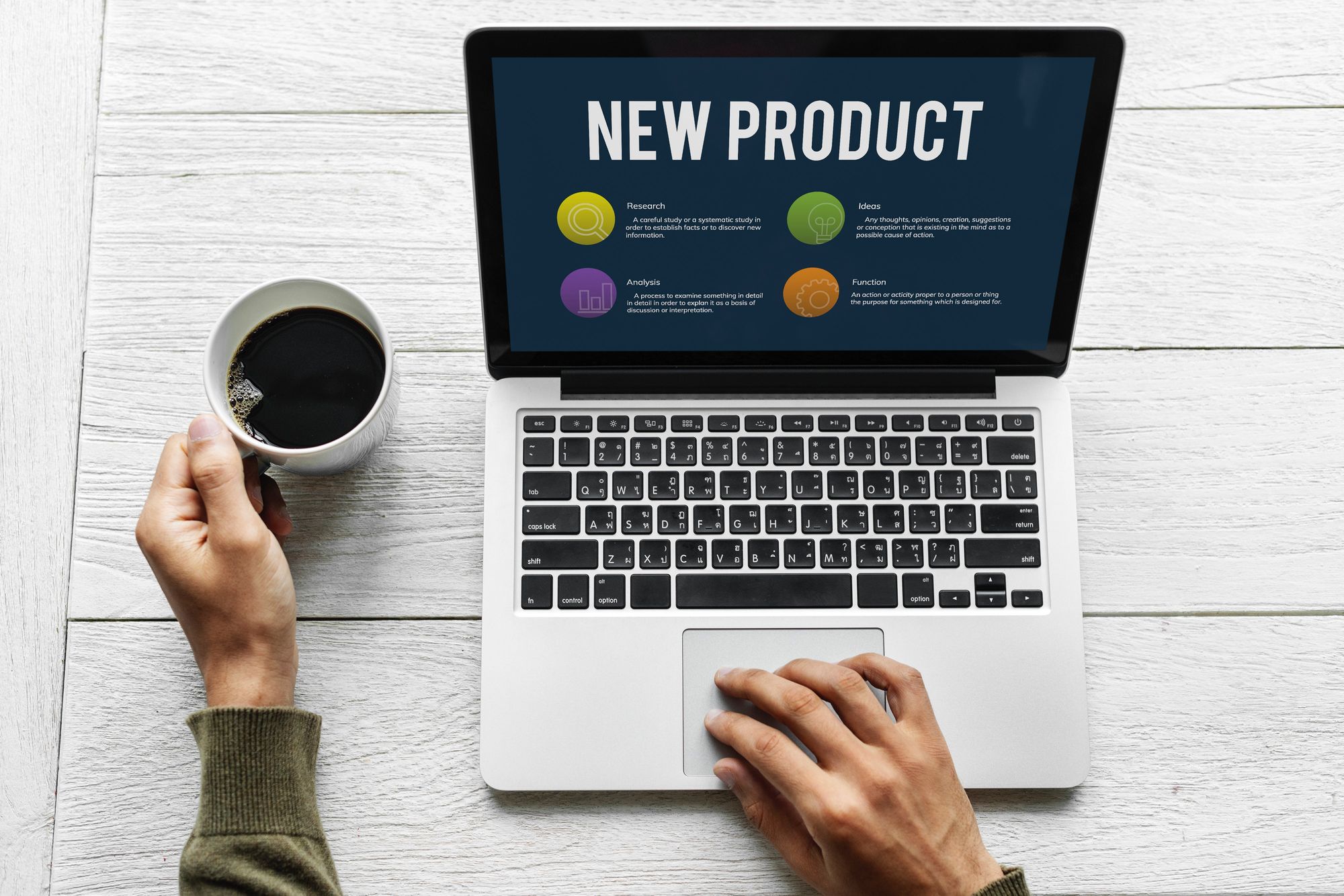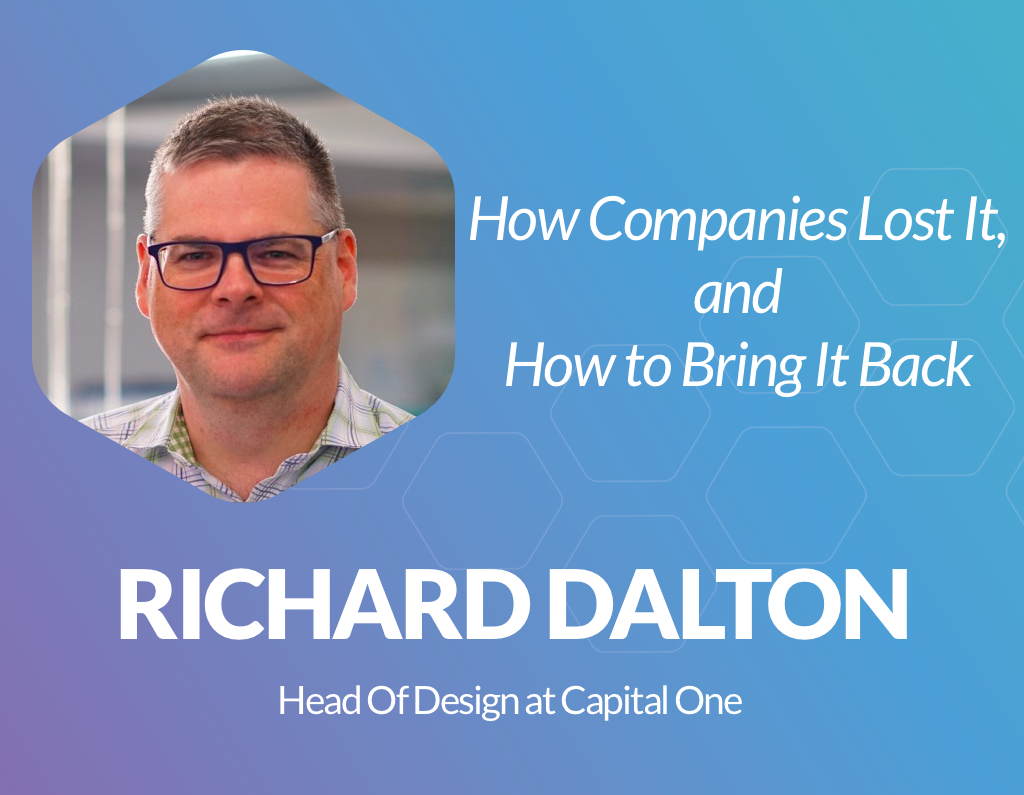Design, Engineering and Management Are Not Enough to Save the Product

Design, product and engineering go together like chocolate, vanilla and strawberries. They’re the three cornerstones for creating exceptional experiences. But are they enough?
Richard Dalton, Head Of Design at Capital One spoke at UXDX2018 on why companies are at risk of failing, and why design, product management and engineering are not enough to save us.

Richard started his talk by giving two interesting examples of poor customer service. The first one was his personal experience at the Venetian hotel in Las Vegas, one of the biggest hotels in the world, where he was told 5 days in a row that he had to wait 90 mins for room service. The other one was a reminder of the now infamous story of David Dao Duy Anh, a United Airlines passenger, who was injured while being forcibly removed from an overbooked flight. The incident was covered by media all over the world and is the biggest scandal the airline has experienced.
We see examples of bad customer experience all the time. We are all just one moment from being United Airlines at some point. Why?
Watch Richard's talk or read on to learn his insights.
Unintended Consequences
United Airlines didn’t intend to drag Dao off the plane. It happened because some years ago, the company made a decision on their processes and policies and trained their employees to follow them, without any awareness of the (horrible) unintended consequences that these policies could have on the customer experience.
A few hundred years ago, the customer interacted directly with the business owner, relationships were built, and the feedback was direct. Then technology happened and that allowed businesses to scale massively, but it also moved the human and the policymaker out of the equation. Customers started to interact more with the screen and the technology, and for most companies, the customer experience is left as “the tip of the iceberg”. It’s a separate department responsible to deal directly with the customer, ignoring the hundreds of touchpoints a person has had with the company before reaching Customer Support.
The rest of the business (product, dev, HR, business, sales, legal, etc), which is usually 90% of the company, is left beneath the water, at “the bottom of the iceberg”. The problem is that all these well-intentioned people at the bottom of the iceberg have little awareness of the unintended consequences of their daily decisions. They massively impact the customer experience, without realising it.
We don’t have models that we could use to understand how everything at the bottom of the iceberg impacts the experience above the water. Consequently, we can’t predict and prevent problems from happening or look for areas to delight.
Enterprise Architecture has been trying to solve this in the last 20 years. Unfortunately, all the books and models writing about strategies and capabilities omit the most important thing. They connect things “beneath the water” but don’t bridge the gap with the “tip of the iceberg”.
Where do we look for inspiration to solve this complex problem?
Richard gives a great example with two very complex ecosystems - the USS Truman flight deck that carries 80 combat aircraft and a couple of nuclear reactors with 5,000 crew men and women; and Amazon’s Fulfillment Centers with millions of products, 600 orders per second and 300M active users.
What do they have in common? They have exceptional management systems that manage their ecosystems. Both systems have been optimised to achieve the outcomes that the organisations care about. The Navy cares about the speed of operations, safety and ability to operate in all weather conditions. Amazon cares about speed of operations, low cost and eliminating mistakes.
“If we care about our customer experience, we need a management system that’s optimised for it.” Click to tweet.
Imagine having the ability to map all of your customer experiences through the journeys in their lives and all of their tasks and emotions to the multichannel touchpoints (webpages, calls, emails). Now imagine to be able to map this to everything ‘beneath the water” (projects, programs, business rules, legal findings).
We could go even further - imagine having a system that executives could use to understand the quality of the touchpoints within their scope. They could use that to determine which touchpoints their team should work on and how are they connected to other projects.
You often see a team who says: “Hey, we're gonna change this business process to fix this webpage”, completely unaware that this business process is connected to hundreds of other touchpoints which they’re about to screw up... Unintended consequences of work.
Working on Empathy
If the United Airlines analyst knew about the consequences his policy would have on the experience of Dao, they would design it differently. If he had the system to highlight potential issues for a segment of customers, this incident could have been avoided.
Richard shares that at Capital One they’re working on a system that increases empathy levels for the customer within all employees who work “underneath the water”. He believes it’s time to systematise the colossal relationship between the “tip of the iceberg” and the “bottom of the iceberg”. For this, we need an experience management system that gives all employees in an organisation the view of how their work and decisions impact the customer experience. It also gives them the power to delight the customer and go the extra step when needed.
This is critical for organisations’ survival.
We all could do better if we turn the Unintended Consequences into Intended Consequences. Click to tweet.
Rory Madden
FounderUXDX
I hate "It depends"! Organisations are complex but I believe that if you resort to it depends it means that you haven't explained it properly or you don't understand it. Having run UXDX for over 6 years I am using the knowledge from hundreds of case studies to create the UXDX model - an opinionated, principle-driven model that will help organisations change their ways of working without "It depends".
Get latest articles straight to your inbox
A weekly list of the latest news across Product, UX, Design and Dev.

